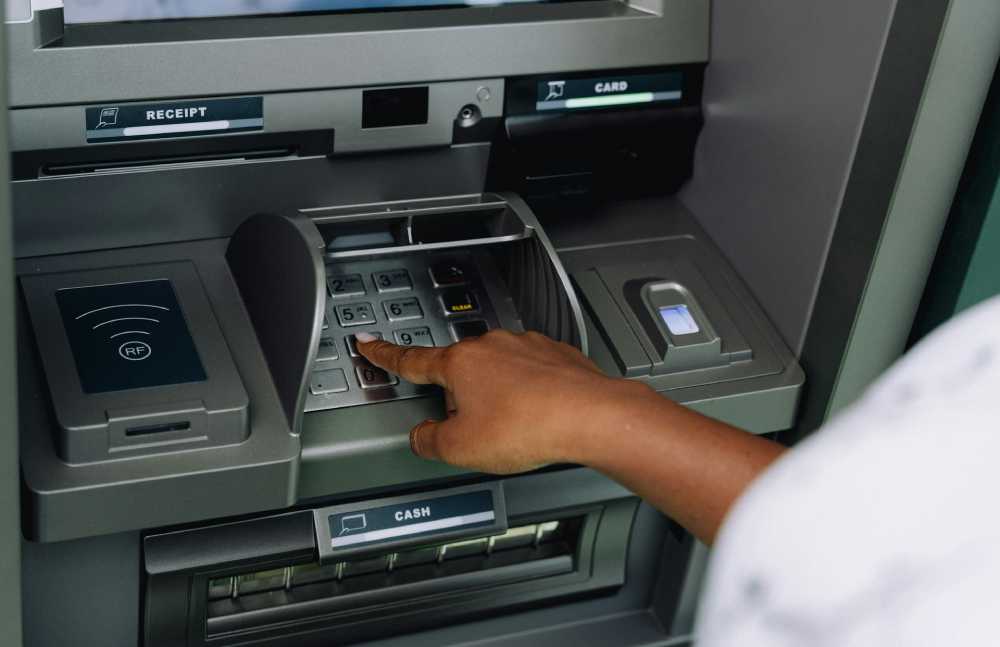With the advent of digital payments and e-commerce, it may be counterintuitive to discuss the placement of physical ATMs in retail spaces. Yet, these machines have retained their importance, serving vital roles in both convenience and financial accessibility for consumers.
Retailers across sectors increasingly integrate ATMs within their premises, recognizing their potential to enhance customer experience while facilitating a boost in in-store activity. The rise in demand for immediate cash withdrawals, coupled with the need for secure and efficient cash management, makes incorporating ATMs a logical extension of retail service offerings.
By integrating comprehensive ATM management solutions, businesses can ensure that these machines are optimally functional and well-positioned, catering to both the convenience of shoppers and the operational goals of the store.
How ATMs Enhance Customer Experience
The seamless integration of ATMs in retail spaces can significantly enhance the shopping experience. Customers value the ability to conduct quick transactions without diverting from their shopping route. According to Forbes, the increase in in-store services like ATMs is a testament to how retailers adapt to meet consumer needs for added convenience.
The presence of an ATM not only provides a service that encourages more extended store visits but also reduces the need for customers to leave the premises to access financial services. Easy access to cash in the shopping environment encourages impulse buying, directly increasing sales. ATMs offer ubiquity, trust, and real-time data collection, making them great for marketing.
The United States had between 520,000 and 540,000 active ATMs as of the end of 2022. These processes involve around 10 billion transactions a year. Consumers are more receptive to advertising from brands they trust. Modern ATMs can record user demographics, transaction times, and patterns, which financial institutions can use to improve overall customer experience. Banks need a lower-cost distribution option to support customer transactions and are happy to refer their customers to ATMs placed at local retailers.
Impact of ATM Accessibility on Sales
ATMs situated within retail environments can lead to a noticeable effect on sales performance. The ease of cash availability anticipated via these machines supports unplanned expenditures. Customers with access to cash on-site are less likely to walk away considering their credit or debit card limits, enhancing the likelihood of immediate purchases. This accessibility fuels a cycle of positive consumer behavior and retail profit.
Customers drawn to the convenience of in-store ATMs can convert their intent to purchase into actual sales, directly benefiting the store’s bottom line. ATM users in retail tend to spend more at the point of sale after getting their cash. An ATM can be helpful for your business if your customers are more likely to pay with cash than a card. ATMs offer features such as ease of fund transfer, withdrawal, deposit, and 24/7 availability of cash.
The easy flow of cash, rising number of transactional benefits, easy withdrawal, quick and prompt service, and the viability of offline shopping have powered the usage of ATMs worldwide. Growing urbanization is a primary factor driving the growth of the market. The global ATM market is expected to grow at a compound annual growth rate of 3.6% from 2025 to 2030 to reach USD 31.64 billion by 2030.
Considerations for Setting Up an ATM
Implementing an ATM within a retail space involves precise planning and logistics. Retailers must evaluate foot traffic flow, ensure security measures are in place, and manage ongoing maintenance requirements to ensure ATMs are consistently operational. Thoughtful location decisions—such as placing ATMs near high-traffic areas or entrances—maximize customers’ visibility and ease of use, enhancing their stages of interaction with the machine.
This strategic placement supports customer satisfaction and encourages continued use, contributing to the retailer’s ultimate goal of increased sales through convenience. Space in retail is minimal, therefore the ATMs must provide maximum value to the merchants. Value can come in multiple formats, such as earned fees shared by the ATM operators and driving foot traffic into the stores.
Security can also be challenging, as physical and logical attacks on retailer cash endpoints, including ATMs, are increasing. ATM deployers should ensure a strategy is in place to deter theft, fraud, and crime. Banks and credit unions are working to deliver on the expectation of a human touch, as they recognize that improving the user experience enhances brand trust and loyalty.
ATM Placements in Retail Settings
ATM placements in retail settings are a strategic move beyond offering customers a point of cash withdrawal; they serve as vital tools to enhance the overall shopping experience and boost store sales. Retailers, particularly those managing high-foot-traffic areas, understand these machines’ pivotal role.
ATM placement must also factor in security and visibility. Proper lighting and camera surveillance are crucial to deter crime. Furthermore, the design should comply with accessibility standards for all customers. Ultimately, a well-placed ATM can significantly increase foot traffic and revenue for retailers.
Being Accessible and Available
Being accessible and available, ATMs influence customer behavior significantly. They offer ease by reducing the need for multiple transaction stops during a shopping excursion, thereby retaining customers within the store for extended periods. Strategically placed ATM Management Solutions ensure that machines are functioning smoothly and located where they can engage the maximum number of consumers, making them indispensable in modern retail environments.
This level of integration enhances customer loyalty. It also turns quick visits into more comprehensive shopping trips. Retailers must also prioritize regular maintenance and cash replenishment. ATMs should provide clear instructions and multilingual options to cater to diverse customer needs.
Challenges and Solutions in ATM Placements
Despite their advantages, ATMs come with security and operational logistics challenges. Retailers must address concerns such as maintaining adequate space, managing potential security risks inherent in cash transactions, and ensuring robust machine upkeep.
Nevertheless, these challenges can be met with pragmatic solutions such as leveraging advanced security technologies and incorporating ATMs into store designs that prioritize customer flow and accessibility. Insights from Retail Dive suggest that well-thought-out store layouts can facilitate smoother integration of ATMs, aligning them with the overall retail environment for optimal performance.
Case Studies of Successful ATM Integration
Real-life examples of successful ATM integration can offer valuable lessons for retailers considering adding these machines to their premises. ATMs have met consumer demands for quick cash access in high-footfall convenience stores and introduced significant revenue during busy hours.
Furthermore, retail chains that have placed ATMs close to entrances find that the immediate visibility attracts planned and spontaneous users, reinforcing the value these machines add to the retail environment. Wavetec’s solutions at CRDB in East Africa and HBL in Pakistan demonstrate the benefits of queue management systems in reducing wait times and improving customer satisfaction.
These systems use kiosks, card readers, and biometric scanners to streamline ATM identification. Digital signage provides real-time updates and marketing content while customers wait, enhancing their experience. HBL integrated Wavetec’s Queue Management system with its core banking system, providing customizable ticket tracking and detailed customer journey reports. ATMs can also be strategically placed in commercial and university areas for different demographics.
Future Trends in Retail-Based ATMs
The landscape of retail-based ATMs is continuously evolving as consumer behaviors and technological advances converge. With trends leaning toward contactless transactions and heightened security features, ATMs’ role is expanding beyond cash withdrawal points. Technologies such as biometric verification and integrating mobile transaction capabilities enhance how consumers interact with ATMs.
These advancements make ATMs integral and driving forces in strengthening overall customer engagement within retail settings. ATMIA’s Next-Gen ATM project aims to create a more tablet-like experience with downloadable software and mobile app integration. This next-generation approach supports secure authentication of financial transactions using QR codes and allows for quicker and lower-cost functionality updates.
Banks and credit unions are also rethinking how and where they utilize ATMs, deploying multiple ATMs in the exact location to support the growing demand for self-service banking. Integrating mobile technology with ATMs can significantly augment customer interaction and user journeys. ATMs are now utilizing QR codes and NFC technology to enhance the security and convenience of transactions.
Conclusion: The Strategic Role of ATMs
ATMs maintain a strategic position within the retail milieu by supporting customer needs and enabling business growth. For modern retailers, incorporating ATMs is not simply about cash dispensing—it’s a commitment to improving shopping experiences through accessible financial services. Strategically placed ATMs can significantly influence sales and consumer loyalty, serving as critical touchpoints in the retail journey and eventually paving the way for lasting success.
ATM marketing strategies can deepen customer relationships by offering personalized offers, cross-selling relevant products, and localizing marketing efforts. Maximizing ATM marketing, financial institutions can deliver customized content directly to ATM screens, using data from multiple sources such as online behavior and transaction history.
ATMs used to be considered standalone machines, but now financial institutions are considering merging them with other channels, including digital banking platforms and mobile banking apps. As banks shutter locations, they’re also looking to interactive teller machines (ITMs) to expand their footprint without the costs of a branch.




